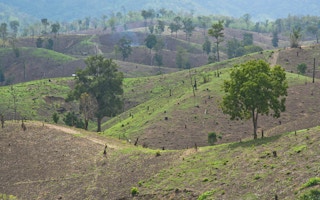Economic losses from the impacts of climate change in Southeast Asia could be 60 per cent higher than previously estimated, reducing the region’s gross domestic product (GDP) by up to 11 per cent by 2100, according to a new Asian Development Bank (ADB) study.
The analysis is an update to a 2009 ADB report that estimated a 7 per cent annual reduction in economic output due to climate change.
“The economic costs of not reining in greenhouse gas (GHG) emissions are more serious than we previously estimated,” said ADB Chief Economist Shang-Jin Wei. “At the same time, this new study also shows that reducing emissions and stabilizing the climate will produce benefits and avoid losses for Southeast Asia, which in the long run sharply outweigh the costs of action.”
An ADB Brief which summarizes these findings, Southeast Asia and the Economics of Global Climate Stabilization, was released during the COP21 conference on climate change in Paris. The study looks at the economic impact of climate change across a range of scenarios, including business-as-usual, and another which sees countries take steps to limit their GHG emissions to keep temperatures from rising above 2 degrees Celsius.
The global analysis focuses on the region’s five largest economies, Indonesia, Malaysia, the Philippines, Thailand, and Viet Nam, which account for 90 per cent of the region’s emissions.
The study quantifies the net benefits to the region from acting to stabilize the climate, which are estimated at as much as five to 11 times more than the net costs. It assessed direct benefits from less climate change, such as improved crop yields, as well as the effects of improved air quality and better transportation that come directly from steps to reduce emissions.
Those steps are also found to cost less as a share of GDP than the region has already been spending on energy policies, such as fossil fuel subsidies.
Reducing emissions will require action on a number of fronts, including a sharp reduction in the rate of deforestation, which accounts for the majority of Southeast Asia’s current emissions. Averting deforestation represents the lowest cost opportunity for emissions reductions and could generate half of the cumulative regional mitigation through the mid-2030s.
The region must also step up efforts on energy efficiency with technologies that improve and reduce power use, which is found as the biggest source of long-term emissions reduction.
The study notes that without changing existing energy use patterns, which include fast growing use of coal and oil, GHG emissions are likely to be 60 per cent higher in 2050 than in 2010.
Reducing emissions is also contingent on developing and introducing low-carbon energy technologies, which would allow the GDP cost of decarbonization to peak within 20-25 years. Carbon capture and storage is a key technology to reduce emissions that the region should explore further.
The study notes that costs of climate stabilization will rise by 60 per cent in 2050 if a global climate agreement to curb carbon emissions is delayed by just a decade.
ADB, based in Manila, is dedicated to reducing poverty in Asia and the Pacific through inclusive economic growth, environmentally sustainable growth, and regional integration. Established in 1966, it is owned by 67 members – 48 from the region. In 2014, ADB assistance totaled $22.9 billion, including cofinancing of $9.2 billion.










